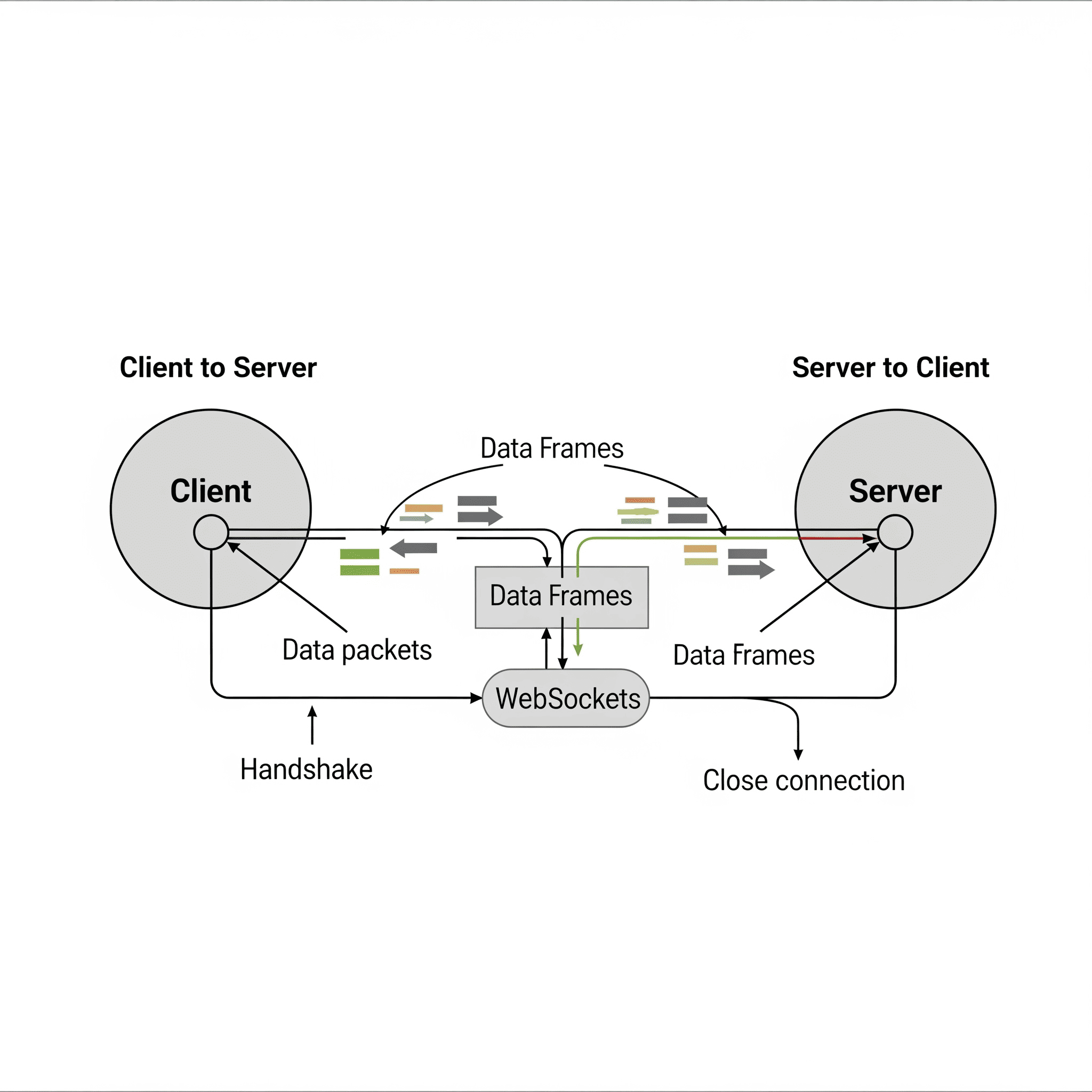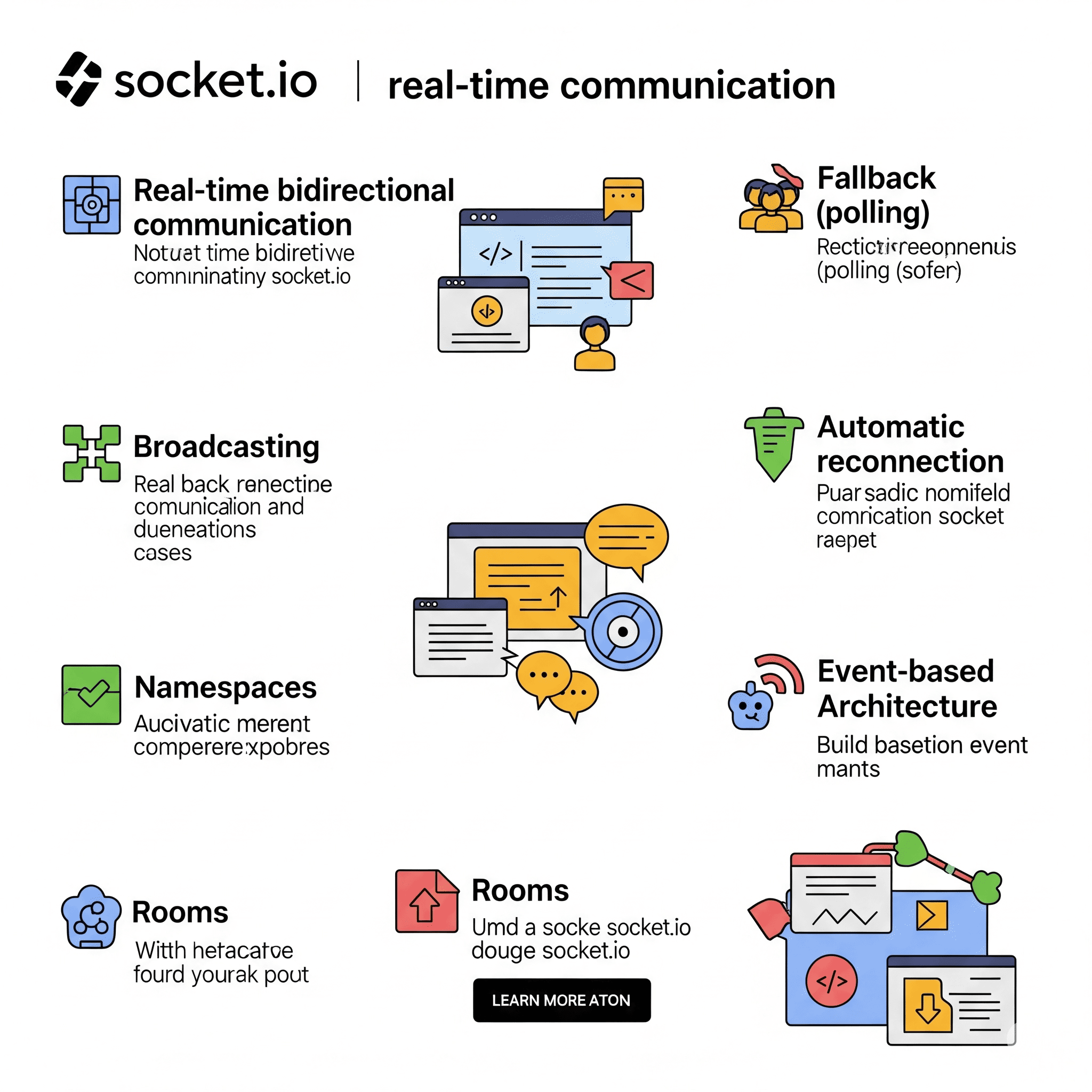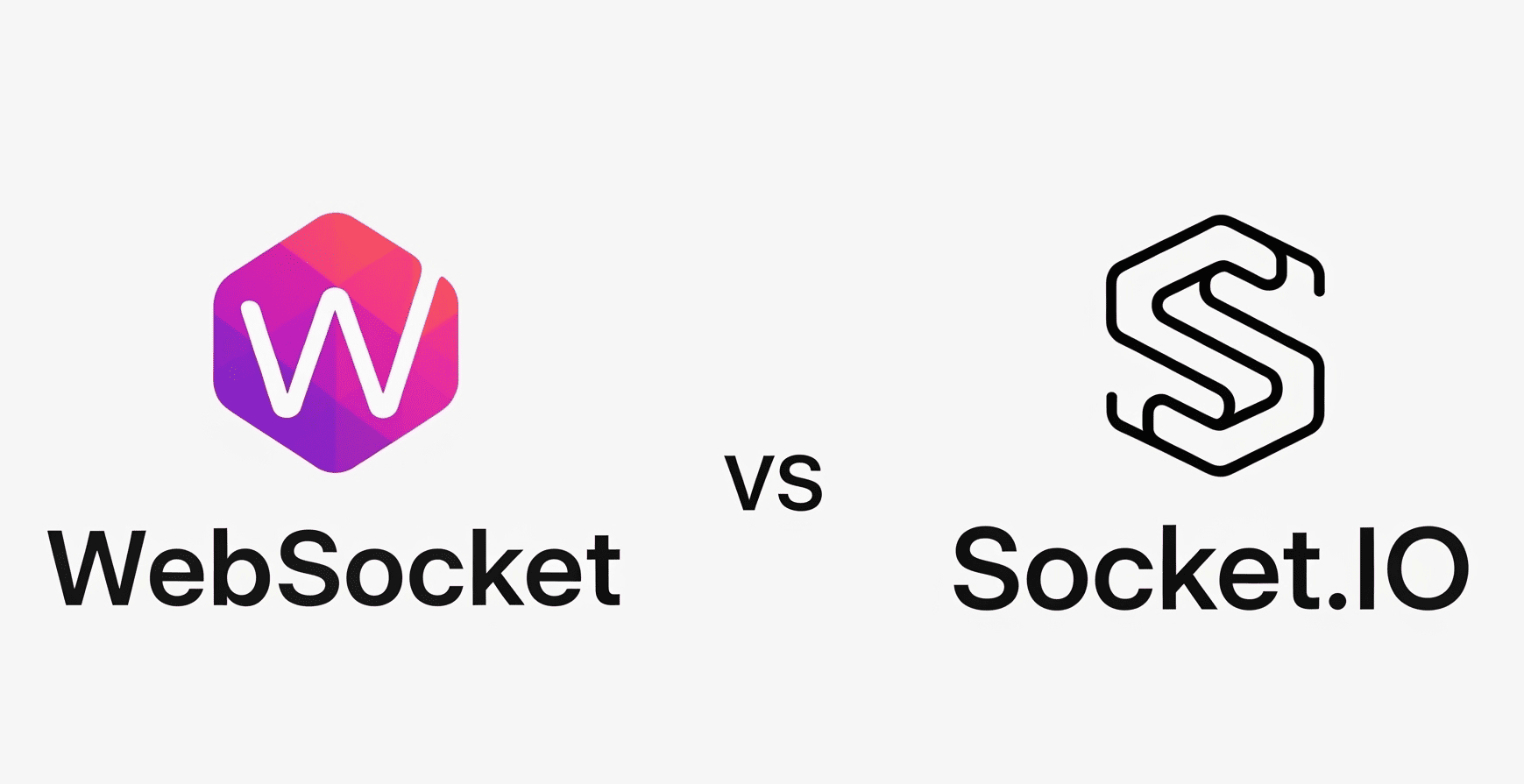Live chats, stock tickers, online games... what do these services have in common? They all need data to be exchanged in 'real-time'. When developing these real-time web applications, many developers find themselves pondering over two technologies: 'WebSocket' and 'Socket.io'. Both seem cool, but which one should you use? 🤔 This article dives into what these two are, and clearly explains which technology to choose for which situation!
Section 1: WebSocket: The Standard Protocol for Real-Time Communication
In short, WebSocket is a 'protocol for two-way communication'. [1, 2] Traditional HTTP communication has a one-way structure where the server only responds when the client sends a request. Like a friend who only answers when I speak first. However, WebSocket opens a channel that allows the server and client to exchange data whenever they want, once a connection is established. Just like a phone call! 📞
It's an HTML5 standard technology, supported by most modern browsers. [2, 4] It has the advantage of being very fast and efficient by reducing unnecessary data during communication. [1, 5] However, its functionality is simple, so it requires the effort of implementing complex features like automatic reconnection when a connection is lost or sending messages to specific user groups.

Let's look at some simple WebSocket server and client code.
// Node.js WebSocket Server (using the 'ws' library)
const WebSocket = require('ws');
const wss = new WebSocket.Server({ port: 8080 });
wss.on('connection', ws => {
console.log('A new client has connected!');
ws.on('message', message => {
console.log(`Received message from client: ${message}`);
// Broadcast the received message to all clients
wss.clients.forEach(client => {
if (client.readyState === WebSocket.OPEN) {
client.send(message);
}
});
});
ws.on('close', () => {
console.log('The client has disconnected.');
});
ws.send('Welcome! You are connected to the WebSocket server.');
});"WebSocket is the standard technology that opened the door to the real-time web. It's pure and fast, but sometimes needs a little extra handling." – A Web Developer
Section 2: Socket.io: The All-in-One Library That Embraces WebSocket
Socket.io is a 'JavaScript library' built on top of WebSocket. [1, 5] If WebSocket is the 'engine' of a car, Socket.io can be compared to a 'complete car' equipped with navigation, air conditioning, and autonomous driving features. 🚗
The biggest features of Socket.io are 'reliability' and 'convenience'. If a user's browser does not support WebSocket or the WebSocket connection fails due to a poor network, it automatically switches to other technologies like HTTP Long-polling to maintain the connection. [1, 2, 5] This is called the 'Fallback' feature. Also, most of the features developers need, such as automatic reconnection, broadcasting messages to users in specific channels (Rooms), and message delivery confirmation, are already implemented. [4, 5]

Let's see how much simpler the code becomes with Socket.io.
// Node.js Socket.io Server
const server = require('http').createServer();
const io = require('socket.io')(server);
io.on('connection', client => {
console.log('A new client has connected!');
// Listen for a specific event (e.g., 'chat message')
client.on('chat message', msg => {
console.log(`Message received: ${msg}`);
// Broadcast the message to all clients
io.emit('chat message', msg);
});
client.on('disconnect', () => {
console.log('The client has disconnected.');
});
client.emit('welcome', 'Welcome! You are connected to the Socket.io server.');
});
server.listen(3000);Section 3: So, What's the Real Difference? (Core Comparison)
Now, let's summarize the differences between the two technologies in a table. Just remembering this table will make you a real-time communication expert! 🤓
| Feature | WebSocket | Socket.io |
|---|---|---|
| Definition | A protocol for bidirectional communication (tech spec/standard) | A real-time communication library based on WebSocket (toolkit) |
| Connection Method | Uses only the WebSocket protocol | Tries WebSocket first, then automatically falls back to other technologies (e.g., HTTP Long Polling) |
| Key Features | Simple message sending and receiving | Room creation, broadcasting, auto-reconnect, message acknowledgements, etc. |
| Performance | Very fast and lightweight | Slightly heavier and slower due to additional features [1, 2] |
| Compatibility | Supported in modern browsers | Works in almost all browsers (thanks to the fallback feature) [4] |
| Server-Client | Can be combined with various libraries | Both server and client must use the Socket.io library [1, 5] |
Key Takeaway
WebSocket is the 'raw technology', and Socket.io is the 'nicely packaged product'. Choose WebSocket if you need pure performance, and Socket.io if stability and development convenience are important.
Section 4: When to Use Which? (A Practical Guide)
Enough with the theory, let's get practical. Which technology is a better fit for which project?
- When to recommend WebSocket:
- ✅ When top performance is crucial: Suitable for services where even a slight delay is critical, like cryptocurrency exchanges or real-time online games that exchange data dozens or hundreds of times per second. [1, 5]
- ✅ For very high traffic: Cost-effective due to low data transmission overhead. [2]
- ✅ When only simple functions are needed: Can be used for simple notification services where the server just broadcasts the same data to all clients.
- When to recommend Socket.io:
- ✅ Chat applications: Very convenient for implementing complex logic like 1:1 conversations, group chat rooms, and read receipts.
- ✅ When a stable connection is important: Suitable for general web services where users' network environments can be diverse and unstable.
- ✅ When rapid development is needed: Reduces development time as there's no need to implement tricky parts like auto-reconnection yourself. [1]
Conclusion: A Word on Making Smart Tech Choices
In conclusion, the question "Which is better, WebSocket or Socket.io?" is meaningless. The right question is "Which is more suitable for which situation?". [1] Like the relationship between JavaScript and jQuery, WebSocket is the fundamental technology, and Socket.io is a tool that helps you use that technology more conveniently. [1]
I hope this article has helped you clearly understand the differences between the two technologies. Choose the most suitable technology for your next real-time project and create an amazing service that provides the best experience for your users! 🚀
